| Date | Text | |
|---|---|---|
30 Nov 1952

Rudolph Pariser |
Rudolph Pariser (chemistry) Rudolph Pariser, Robert G. Parr and John Pople publish their computational quantum chemistry theory for approximating molecular orbitals. |
|
30 Nov 1952

Tom Kilburn |
Tom Kilburn (computer sciences) Tom Kilburn at the University of Manchester completes a device called MEG, which performs floating-point calculations. This machine evolves into the first transistorized computer, the Metro-Vickers MV950, ultimately leading to the mass production of computers. |
|
30 Nov 1952
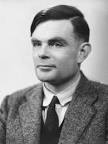
Alan Turing |
Alan Turing (computer sciences) Alan Turing publishes an article describing the first 1,104 zeroes of the Riemann zeta-function, the culmination of fifteen years of work on how to use computers to tackle a fundamental problem in number theory. |
|
30 Nov 1952
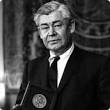
Maurice Ewing |
Maurice Ewing (earth sciences) Maurice Ewing and Bruce Heezen discover the deep canyon running along the center of the Mid-Atlantic Ridge, an important contribution to the theory of plate tectonics. |
|
30 Nov 1952

Cincinnati |
Cincinnati (medicine and human s) Cincinnati psychiatrist Max Lurie and Harry Salzer coin the term antidepressant. |
|
30 Nov 1952

B. F. Skinner |
B. F. Skinner (medicine and human s) B. F. Skinner publishes the book Science and Human Behavior, a controversial attempt to apply the results of behavioral studies of laboratory animals to human psychology. |
|
30 Nov 1952

Frederick Reines |
Frederick Reines (physics) Frederick Reines and Clyde Cowan perform the first neutrino detection experiments, constructing the first neutrino detector (a cadmium-water target) and using the Hanford Site nuclear facility in Washington State as the neutrino source. This work, first discussed with Enrico Fermi and others in 1951–2, leads to the 1995 Nobel Prize in Physics. |
|
30 Nov 1952
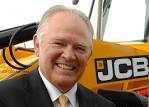
J. C. Bamford |
J. C. Bamford (technology) J. C. Bamford of England introduce the backhoe loader. |
|
30 Nov 1952

Jet Propulsion Laboratory |
Jet Propulsion Laboratory (technology) The Jet Propulsion Laboratory completes development of the SSM-A-17 Corporal I rocket. This is the first American surface-to-surface ballistic missile, powered by a liquid-fuelled motor utilizing nitric acid as the oxidizer. |
|
30 Nov 1952

Rudolf Carnap |
Rudolf Carnap Rudolf Carnap publishes an article called "Testability and Meaning" in Readings in the Philosophy of Science, which moves away from the philosophical position of logical positivism with respect to science (particularly the heavily mathematical sciences, such as physics). Carnap instead emphasizes the idea that progress in science depends on the gradual accumulation of many small results that support human understanding of the world, a view more in line with Ludwig Wittgenstein's later philosophy and the biological sciences. |
|
30 Nov 1952
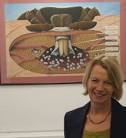
Pat Nuttall |
birth Pat Nuttall Pat Nuttall, British virologist and acarologist. |
|
02 Jan 1953

Vincent Racaniello |
birth Vincent Racaniello Vincent Racaniello, American virologist. |
|
14 Jan 1953

Doctors' plot |
Doctors' plot "Doctors' plot": The state newspaper Pravda publishes an article alleging that many of the most prestigious physicians in the Soviet Union, mostly Jews, are part of a major plot to poison the country's senior political and military leaders. |
|
17 Jan 1953

Ingeborg Hochmair |
birth Ingeborg Hochmair Ingeborg Hochmair (née Desoyer), Austrian electrical engineer. |
|
13 Feb 1953
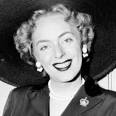
Christine Jorgenson |
Christine Jorgenson (medicine and human s) Christine Jorgenson, the first widely known American transsexual, returns to New York after successful sexual reassignment surgery in Denmark. |
|
16 Feb 1953
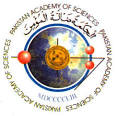
Pakistan Academy of Sciences |
Pakistan Academy of Sciences The Pakistan Academy of Sciences is established. |
|
25 Feb 1953

Sergei Winogradsky |
death Sergei Winogradsky Sergei Winogradsky, Russian microbiologist (b. 1856). |
|
28 Feb 1953

DNA structure discovered |
DNA structure discovered In 1953, James Watson, from early on this Saturday, spent his time at the Cavendish Laboratory in Cambridge, shuffling cardboard cutout models of the molecules of the DNA bases: adenine (A), guanine (G), cytosine (C) and thymine(T). After a while, in a spark of ingenuity, he discovered their complementary pairing. He realized that A joined with T had a close resemblance to C joined with G, and that each pair could hold together with hydrogen bonds. Such pairs could also neatly fit like rungs meeting at right-angles between two anti-parallel helical sugar-phosphate backbones of DNA wound around a common axis. Such structure was consistent with the known X-ray diffraction pattern evidence. Each separated helix with its half of the pairs could form a template for reproducing the molecule. The secret of life! |
|
28 Feb 1953

Eliezer Sukenik |
death Eliezer Sukenik Died 28 Feb 1953 at age 63 (born 12 Aug 1889). Eliezer Lipa Sukenik was a Polish-Israeli archaeologist who established the date and provenance of the Dead Sea Scrolls. He settled in Israel in 1912, began teaching in 1914 and eventually became field archaeologist at the Hebrew University. He directed the excavations of the synagogues and Jewish tombs. In 1947, within the eleven caves near Qumran, north-west of the Dead Sea, Israel, parts of more than 700 ancient Jewish manuscripts were discovered. Most were written in Hebrew, some in Aramaic and fewer in Greek. The Dead Sea Scrolls, as they came to be known, are assumed to have been the library of a sectarian community at Qumran. Sukenik devoted the rest of his life to their study. |
|
26 Mar 1953
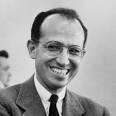
Jonas Salk |
Jonas Salk (medicine and human s) Jonas Salk announces his polio vaccine. |
|
30 Mar 1953
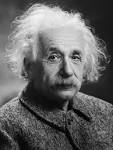
Einstein |
Einstein In 1953, Albert Einstein announced his revised unified field theory. |
|
17 Apr 1953

Sven Gustaf Wingqvist |
death Sven Gustaf Wingqvist Sven Gustaf Wingqvist, Swedish engineer, inventor and industrialist (b. 1876). |
|
22 Apr 1953

Jan Czochralski |
death Jan Czochralski Jan Czochralski, Polish-German discoverer of the Czochralski process for growing crystals (b. 1885). |
|
25 Apr 1953
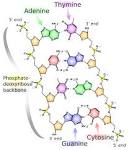
DNA structure |
DNA structure In 1953, the Nature journal published the structure of DNA, as suggested in a one-page article by James Watson and Francis Crick. Their work earned the pair of scientists a Nobel Prize in 1962. The structure explained how DNA passed heriditary information from cell to cell, and from generation to generation. “This structure has two helical chains each coiled around the same axis... Both chains follow right-handed helices... The novel feature of the structure is the manner in which the two chains are held together by purine and pyrimidine bases... They are joined together in pairs, a single base from one chain being hydrogen-bonded to a single base from the other chain, so that the two lie side by side with identical z-co-ordinates.” |
|
06 May 1953

open heart surgery |
open heart surgery (medicine and human s) The first successful open heart surgery on a human utilizing a cardiopulmonary bypass pump ("heart-lung machine") is performed by John Gibbon at Thomas Jefferson University Hospital in Philadelphia when he repairs an atrial septal defect in 18-year-old Cecilia Bavolek. |
|
14 May 1953
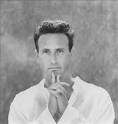
Martin Page |
birth Martin Page Martin Page, English botanist. |
|
15 May 1953
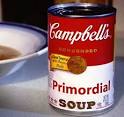
Primordial soup |
Primordial soup In 1953, Stanley L. Miller's paper on the synthesis of amino acids under conditions that simulated primitive Earth's atmosphere was published in Science. Miller had applied an electric discharge to a mixture of CH4, NH3, H2O, and H2 (which was believed at the time to be the atmospheric composition of early Earth.) Instead of producing a random mixture of organic molecules, the surprising result was a mixture of amino acids, hydroxy acids, and urea. These compounds are so significant in the biochemistry of life, that this discovery marked the beginning of the modern study to understand the origin of life on Earth. Miller's paper was published only a few weeks after Watson and Crick reported their DNA double-helix model in Nature. Geoscientists now tend to believe in other sources for the origin of life, but Miller's experiment focussed interest on the primordial formation of amino acids |
|
15 May 1953

Stanley Miller |
Stanley Miller (chemistry) Stanley Miller publishes results from the Miller-Urey experiment in the journal Science. These surprise many chemists, by showing that organic molecules present in living organisms can form easily from simple inorganic chemicals. |
|
17 May 1953

Maria Petrou |
birth Maria Petrou Maria Petrou, Anglo-Greek artificial intelligence researcher (d. 2012). |
|
29 Jul 1953

Richard Pearse |
death Richard Pearse Died 29 Jul 1953 at age 75 (born 3 Dec 1877). New Zealand inventor and aviation pioneer who at age 21, turned from farming his 100 acres of land, and built a workshop with a forge and a lathe to become an inventor. His first patent was a type of bicycle. By 1902, Pearse had probably built a lightweight two-cylinder engine and first plane out of bamboo, tubular steel, wire and canvas. Accounts of the dates and details of his flights vary because they were not documented, but it is believed that on 31 Mar 1903 he made at least a powered takeoff, though not a controlled, sustained flight, covering perhaps 350 yards before crashing into a tall gorse fence. (It would be the fifth successful powered takeoff in the world.) He made other inventions in his life. Pearse died poor, in a mental hospital. |
|
15 Aug 1953
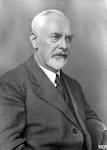
Ludwig Prandtl |
death Ludwig Prandtl Died 15 Aug 1953 at age 78 (born 4 Feb 1875). German physicist who is remembered for his studies of both aerodynamics and hydrodynamics. He established the existence of the boundary layer adjoining the surface of a solid over which a fluid flows. The design of an efficient shape, weight, and mass for ships and aircraft owes much to his work, for which he is considered to be the father of aerodynamics. His made major studies on the effects of streamlining and the properties of aircraft wings. He made improvements to such constructions as wind tunnels. The Prandtl number is a dimensionless group used in the study of convection. The von Karman-Prandtl equation describes the logarithmic variation of water velocity within a channel from zero flow at the stream bed to a maximum velocity at the water surface. |
|
18 Aug 1953

Kinsey Reports |
Kinsey Reports (medicine and human s) The second of the controversial Kinsey Reports on human sexuality, Sexual Behavior in the Human Female, is published in the United States. |
|
04 Sep 1953

REM sleep |
REM sleep (medicine and human s) The discovery of REM sleep is first published by researchers Eugene Aserinsky and Nathaniel Kleitman of the University of Chicago. |
|
16 Sep 1953

widescreen |
widescreen (technology) Epic film The Robe is released in the United States as the first widescreen anamorphic format movie, filmed in CinemaScope. |
|
23 Sep 1953

WD-40 invention |
WD-40 invention In 1953, WD-40 was invented and recorded for the first time in the Rocket Chemical Company's logbook. It was the Water Displacement 40th test, and first successful, formula created by Norm Larsen, for a lubricating penetrating oil intented to displace water for rust prevention. In 1958, it was packaged in cans and sold to the consumer market in San Diego, California, where the company was founded in 1953. It was named WD-40, its original test designation. The name of the company Larsen founded reflects its original purpose to supply materials used in manufacture of nuclear missiles, for which WD-40 was designed to coat structural components and prevent corrosion. After wide success with its versatile, but only product, the company name was changed in 1969 to the WD-40 Company Inc. |
|
28 Sep 1953
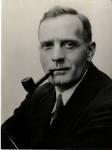
Edwin Hubble |
death Edwin Hubble Edwin Hubble, American astronomer (b. 1889). |
|
30 Sep 1953

Lewis Fry Richardson |
death Lewis Fry Richardson Died 30 Sep 1953 at age 71 (born 11 Oct 1881). British physicist and psychologist who first applied mathematics to accurate weather prediction. Richardson applied the mathematical method of finite differences to predicting the weather (1922). In his life, he held various posts: at the National Physical Laboratory, the Meteorological Office, and several university posts in physics or technology. Also, he was a chemist with National Peat Industries and in charge of the physical and chemical laboratory of the Sunbeam Lamp Co. Early application of mathematical techniques for systematically forecasting the weather were limited by extensive computation time: three months to predict weather for the next 24 hours. With electronic computers available after WW II made his methods became practical. He wrote several books applying mathematics to the causes of war. He contributed to calculus and the theory of diffusion for eddy-diffusion in the atmosphere. The Richardson number, a quantity involving gradients (change over distance) of temperature and wind velocity, is named after him. |
|
03 Oct 1953

Florence Rena Sabin |
death Florence Rena Sabin Died 3 Oct 1953 at age 81 (born 9 Nov 1871). American anatomist who was one of the first women physicians to pursue a research career. Her investigation of the lymphatic system proved that it developed from the veins in the embryo and grew out into tissues, the reverse of then prevailing understanding. In 1903, she became the first woman on the faculty at Johns Hopkins University School of Medicine. It had initially been reluctant to hire a woman, but she had shown exceptional skill in papers published during a fellowship there. She moved in 1925 to head the cellular immunology section at the Rockefeller Institute, where she researched the body's white blood cells reaction to tuberculosis infection. In 1926, she was the first woman elected to the National Academy of Sciences. |
|
09 Oct 1953

Pope Pius XII |
Pope Pius XII As part of an extended series of publications on science, Pope Pius XII publishes "The Technician", which instructs scientists to restrict themselves to the study of physical matter and do nothing to undermine the idea of a non-material soul or a Superior Being. "The Technician" is delivered as a papal address on October 9. |
|
13 Oct 1953

Ultrasonic alarm |
Ultrasonic alarm In 1953, the first U.S. patent for a burglar alarm operated by ultrasonic sound was issued to Samuel Bagno of New York City (No. 2,655,645) on a system for movement detection in a confined space by intruders or fire. It was manufactured as the Alertronic and first sold in Jun 1950. A sound source produced waves of 19,000 hertz, a frequency too high for normal human hearing. An intruder could be detected by the alarm by a difference in frequency of the reflected waves from the moving body (the Doppler effect). The device would then sound an alarm. |
|
13 Nov 1953

Herbert E. Ives |
death Herbert E. Ives Died 13 Nov 1953 at age 71 (born 31 Jul 1882). Herbert Eugene Ives was an American physicist and inventor of transmission of mechanical video pictures. Research into a television process by the AT&T Co. at Bell Laboratories, New York was under the direction of Dr. Herbert E. Ives. On 7 Apr 1927, live images of Commerce Secretary Hoover were transmitted in the first successful long distance demonstration of television, sent from Washington D.C. to New York, over long distance wires. On 27 June 1929 the first public demonstration of color TV showed images are a bouquet of roses and an American flag using a mechanical system was used to transmit 50-line color television images between New York and Washington. A two-way video telephone was first demonstrated in 1930 by Ives in New York City. |
|
21 Nov 1953

Natural History Museum |
Natural History Museum (paleontology) Authorities at the Natural History Museum in London announce that the skull of Piltdown Man (allegedly an early human discovered in 1912) is a hoax. |
|
08 Dec 1953

Atoms for Peace Speech |
Atoms for Peace Speech In 1953, President Dwight Eisenhower gave his “Atoms for Peace” speech in an address before the General Assembly of the United Nations. He proposed the establishment of the International Atomic Energy Agency to devise “methods whereby this fissionable material would be allocated to serve the peaceful pursuits of mankind ... to apply atomic energy to the needs of agriculture, medicine and other peaceful activities. A special purpose would be to provide abundant electrical energy in the power-starved areas of the world.” This initiated commercial nuclear power. Shortly thereafter, the U.S. Congress passed the 1954 Atomic Energy Act which permitted, for the first time, the wide use of atomic energy for peaceful purposes. |
|
12 Dec 1953

Jet speed record |
Jet speed record In 1953, an aircraft first reached the speed of 2-1/2 times the speed of sound (2.5 mach). Chuck Yeager established the record flying a Bell X-1A, a slightly larger, much modified version of the Bell X-1. It was carried aloft to launching altitude by a B-29 to conserve its 4 minutes of rocket fuel. On this flight, the first ever instance of inertia-coupling (then called "high-speed instability") occurred. The airplane tumbled violently - about all three axes - for more than 40,000 feet before Yeager was able to begin to recover to wings-level, stable flight. This was a terrifying incident in which the skill of the pilot saved his life and the aircraft. Only 22 days before, 20 Nov 1953, Scott Crossfield had been the first to reach mach 2.01 in a Navy D-558-II. |
|
17 Dec 1953

NTSC |
NTSC (technology) The NTSC color television standard is agreed for the United States. |